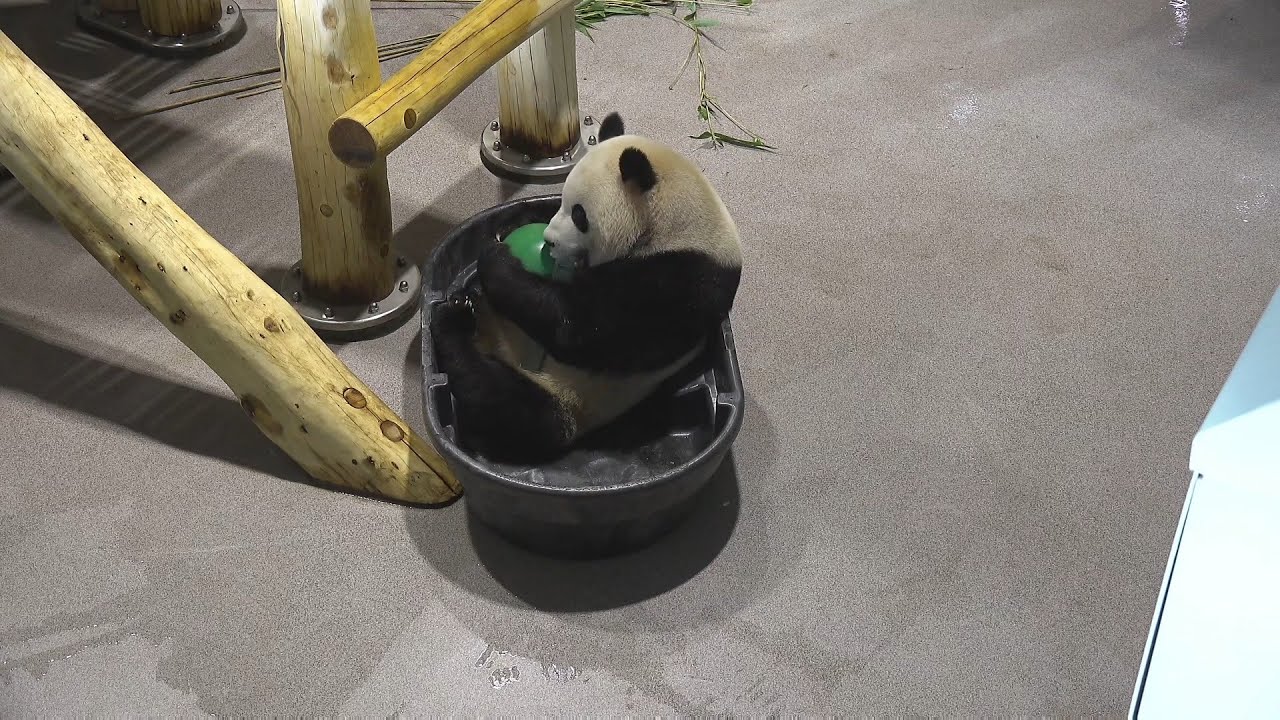- The charming behavior of Bao Li and Qing Bao in a tub highlights the playful and engaging nature of giant pandas, offering insights into their natural behaviors in captivity.
- Zoo management practices that contribute to the welfare and enrichment of pandas, with a focus on environmental conditions, diet, and enrichment activities.
- The significance of giant pandas in wildlife conservation efforts and their role as ambassadors for endangered species.
- The impact of social media and video content in raising awareness and attracting attention to conservation initiatives involving pandas.
- The role of collaborative international programs in conserving giant pandas and the shared responsibilities in maintaining genetic diversity and habitat preservation.
The video of Bao Li and Qing Bao, affectionately known as the DC Pandas, portrays an intimate moment of these beloved animals at the National Zoo. Their interaction in a tub captivates audiences worldwide, demonstrating the compelling nature of giant pandas in modern zoos. These captivating creatures engage viewers through their playful antics, shedding light on the nuances of panda behavior and their intriguing personalities. Such behavior is a result of both innate characteristics and the conducive environment provided by zoo management, designed to bring out their lively and natural disposition.
Zoo management plays a vital role in enhancing the daily lives of pandas like Bao Li and Qing Bao. At its core, managing pandas involves creating habitats that simulate their natural environment, complete with climbing structures and pools for enrichment. Zoos prioritize providing a nutritious diet, predominantly featuring bamboo, supplemented by specially formulated biscuits and fruits. Ensuring proper nutrition is crucial for their digestive health and overall well-being. Additionally, zoos develop extensive enrichment programs, incorporating toys and structures to mimic natural behaviors. Enrichment activities stimulate their mental and physical health, encouraging natural exploratory and playful behaviors that can be observed in videos like those of Bao Li and Qing Bao.
Giant pandas serve as iconic ambassadors for wildlife conservation efforts, bringing attention to the plight of endangered species worldwide. Their status has significantly improved due to concerted conservation efforts, moving from endangered to vulnerable on the IUCN Red List. By spotlighting pandas, conservationists can leverage public fascination to advocate for the preservation of biodiversity and increased wildlife protection initiatives. These charismatic animals foster a connection with the public, acting as symbols for the larger environmental issues concerning habitat loss and species preservation.
In an age where digital content reigns supreme, videos and social media platforms have become instrumental in drawing attention to the conservation of giant pandas. The popularity of videos like those featuring Bao Li and Qing Bao can drive public interest and support for conservation programs. By capturing these engaging interactions on video, zoos and conservation organizations create opportunities to reach a vast audience, converting admiration into action. This accessible form of media generates financial support through donations and sponsorships, contributing directly to conservation efforts and habitat restoration projects.
Collaborative efforts across the globe have been crucial in safeguarding the future of giant pandas like Bao Li and Qing Bao. International breeding programs and partnerships have bolstered panda populations, emphasizing genetic diversity through coordinated efforts. These programs ensure that pandas remain genetically viable, fostering cross-border cooperation in scientific research, breeding, and habitat conservation. Each participating zoo and institution shares responsibility in the global endeavor to prevent panda extinction, supporting China’s native habitats and preserving these remarkable species for future generations.
As a symbol of hope and perseverance, the DC Pandas remind us of the importance of protecting our environment and its inhabitants. Their playful moments in a tub serve as a poignant reminder of the joy and responsibility associated with safeguarding wildlife. By fostering a greater understanding of giant pandas, we can engage more people in the vital mission of wildlife conservation, ensuring a healthier planet for all its creatures.
*****
Source Description
If they fit, they sit! Giant pandas Bao Li and Qing Bao recently tested out tubs in their indoor habitats. Bao Li sat in the panda-sized space with his favorite green ball before he rolled onto his back and balanced it on his paws. Qing Bao climbed in and out of the tub, then took her orange ball for a short stroll. The Giant Panda Cam captured these paw-sitively adorable moments. It returns Jan. 24, just in time for Bao Li and Qing Bao’s public debut!
. . .
The bear pair will make their public debut on Friday, Jan. 24. Follow #DCPandas for updates. 🎟️ FREE ENTRY PASSES: nationalzoo.si.edu/dcpandas.


